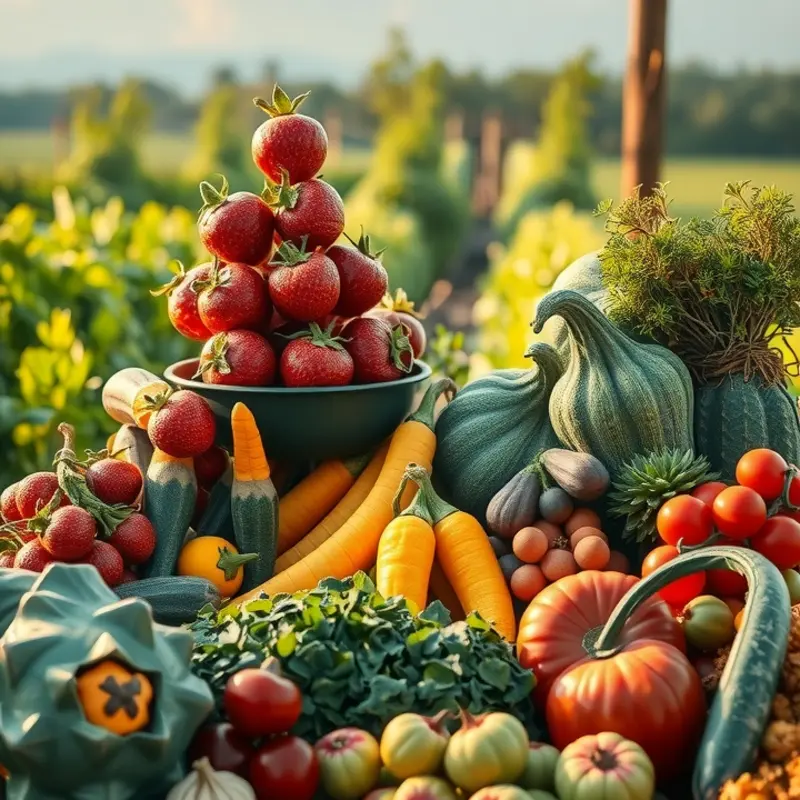Cooking vegetables al dente preserves their color, nutrients, and crispness, enhancing your meals significantly. This guide offers practical tips to sharpen your cooking skills, regardless of your experience level. Discover how to achieve that ideal tender yet firm texture that makes vegetables a delight on any plate.
Understanding Al Dente Texture

Cooking vegetables al dente involves bringing them to a point where they are cooked yet still firm to the bite. This term, borrowed from Italian culinary lingo, literally means ‘to the tooth,’ referring to the enjoyable resistance characterized by properly cooked al dente foods.
Why strive for this particular texture with vegetables? The benefits are multi-fold. First and foremost, al dente vegetables retain their vibrant color and fresh flavor. Cooking them to this point ensures minimal nutrient loss—a factor that’s crucial for maintaining the health benefits of vegetables. Nutrient retention is optimum at this stage, as extended cooking can lead to significant loss of vitamins and minerals.
From a scientific perspective, the texture of al dente is about achieving the perfect state where the cellulose structure of the vegetable is partially broken down but not too much. During cooking, cellulose and pectin, the structural components of vegetables, start to degrade. This process, if not managed correctly, can lead to mushy textures. By achieving an al dente texture, we strike a balance, maintaining enough structural integrity to offer that toothsome resistance that enhances the eating experience.
Overcooked vegetables, on the other hand, often end up limp, dull, and flavorless. Additionally, overcooking destroys many of the vital nutrients that contribute to the health benefits of consuming vegetables. The flavor compounds can break down, leaving only the basic notes, without the fresh crispness that makes vegetables so delightful.
Certain vegetables particularly excel when cooked al dente. Broccoli, green beans, asparagus, and carrots are classic examples. Their robust structure allows them to maintain a firm texture even after their complex flavors have been accentuated by this level of cooking. Conversely, more delicate greens, like spinach, might not require such treatment, as their fragile leaves can quickly shift from perfect to overdone.
To achieve the desired outcome, it’s crucial to monitor the cooking process closely. Using techniques like blanching and then shocking vegetables in ice water can help stop the cooking process at the right moment, preserving that ideal texture. Experimenting with different cooking times helps understand when a vegetable reaches its al dente peak.
As you master these techniques, it’s essential to integrate elements of mindful cooking, embracing the time it takes to achieve that perfect texture. For more on how cooking methods can impact food, consider exploring flavor boosters without salt, which further enhance your culinary experience, especially when aiming for that delicate balance of taste and texture.
Cooking Method for Al Dente Vegetables

Achieving perfect al dente vegetables is all about precision in cooking techniques. One of the key methods is blanching, which begins with boiling vegetables briefly followed by immediate immersion in ice water. This process helps lock in color and nutrients. For green beans, a two-minute boil followed by a dunk in ice water achieves an ideal crunchy texture. Asparagus needs slightly less time, around 1.5 minutes, while thicker vegetables like broccoli prefer a bit longer, about three minutes.
Another effective method is sautéing. This approach utilizes fat, typically in the form of oil or butter, to conduct heat. Start by heating your fat of choice in a pan over medium heat. Add your vegetables in a single layer to ensure even cooking. Carrots and bell peppers, sliced thinly, achieve a great al dente texture in about five to seven minutes. The key is to keep them moving to prevent burning while ensuring they cook evenly.
Steaming is another method famed for its ability to retain flavor and nutrients. Place your vegetables in a steaming basket over simmering water, ensuring they don’t touch the liquid. Start with tougher veggies like carrots and add more delicate greens like spinach towards the end. Generally, four to six minutes suffices for most greens to turn tender yet maintain their slight crunch.
Timing is everything; it’s essential to taste-test frequently. Start checking firmer vegetables like cauliflower after four minutes. Remember, residual heat continues cooking once you remove them from heat.
Proper cutting also contributes significantly to achieving al dente results. Uniformly sized pieces ensure even cooking. For example, when preparing carrots, opt for diagonal slices that offer more surface area and cook evenly in a shorter time.
Seasoning should enhance, not overpower, the natural flavors of vegetables. Experiment with herbs like thyme or dill during cooking, or finish with a squeeze of lemon or a sprinkle of pepper. These simple additions can elevate your dish without complicating it.
For more ideas on enhancing flavor without excess sodium, you might find this guide helpful: Flavor Boosters Without Salt.
Mastering al dente vegetables involves combining the right cooking method with attention to detail in timing and seasoning. Use these techniques as a foundation and explore various combinations to delight your palate with every bite.
Final words
Cooking vegetables al dente not only enhances their taste but also ensures maximum retention of nutrients, providing you with both health benefits and culinary joy. By utilizing the techniques discussed, you can elevate your home cooking and impress your family and friends with beautifully cooked vegetables. Whether it’s a vibrant stir-fry or a fresh salad, mastering the art of al dente cooking opens up numerous possibilities. Embrace these methods in your kitchen, and take pride in the delicious, nutritious meals you create.







